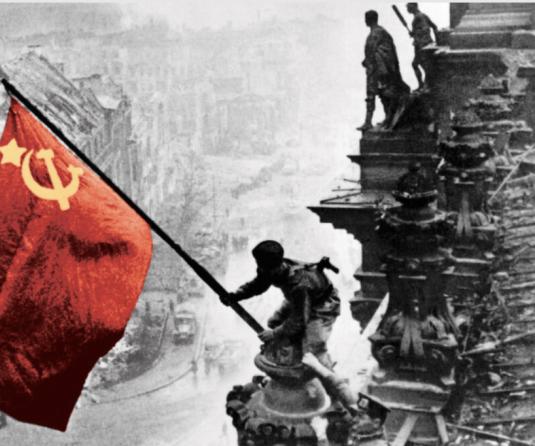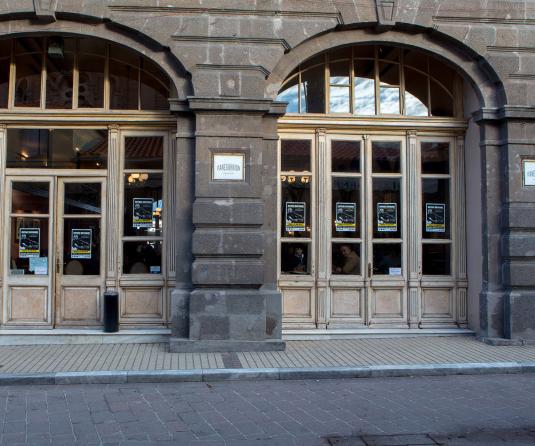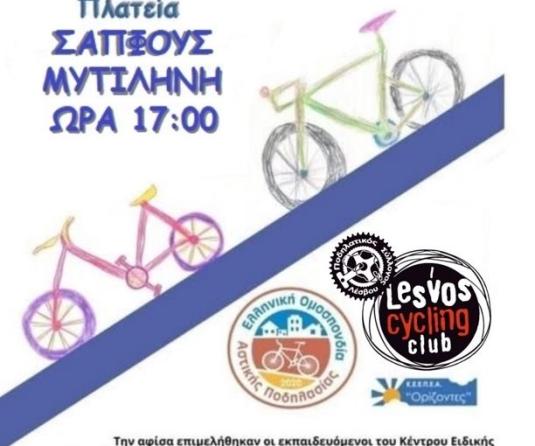Προληπτική μαστεκτομή για την Αντζελίνα Τζολί. Το αποκάλυψε δημόσια με άρθρο της
Σε άρθρο της με τίτλο «Η ιατρική επιλογή μου» στην εφημερίδα «Νιου Γιορκ Τάιμς», η 37χρονη αμερικανίδα ηθοποιός γράφει πως υποβλήθηκε σ' αυτή την επέμβαση επειδή έχει ένα ελαττωματικό γονίδιο το οποίο αυξάνει τον κίνδυνο να εμφανίσει καρκίνο.
Η Αντζελίνα Ζολί αποκάλυψε σήμερα ότι υπεβλήθη σε διπλή μαστεκτομή για να προλάβει έναν πολύ αυξημένο κίνδυνο να εμφανίσει καρκίνο του στήθους και των ωοθηκών.
Σύμφωνα με την ίδια, πριν από την επέμβαση είχε κίνδυνο 87% να αναπτύξει καρκίνο του μαστού και 50% καρκίνο των ωοθηκών, εξαιτίας της παρουσίας αυτού του ελαττωματικού γονιδίου (BRCA1).
Η μητέρα της Αντζελίνα Ζολί πέθανε σε ηλικία 56 ετών από καρκίνο.
"Όταν έμαθα την κατάστασή μου, αποφάσισα να προηγηθώ και να ελαχιστοποιήσω τους κινδύνους όσο το δυνατόν περισσότερο", γράφει. "Αποφάσισα να υποβληθώ προληπτικά σε διπλή μαστεκτομή".
"Άρχισα από τους μαστούς, καθώς ο κίνδυνος του καρκίνου του μαστού είναι πιο αυξημένος από τον κίνδυνο του καρκίνου των ωοθηκών, και η επέμβαση είναι πιο περίπλοκη".
Στις 27 Απριλίου, η ηθοποιός τελείωσε τους τρεις μήνες της ιατρικής προετοιμασίας που προβλέπεται πριν από τις επεμβάσεις.
Στο εξής, ο κίνδυνος να εμφανίσει καρκίνο του μαστού δεν είναι περισσότερες από 5%, διευκρίνισε.
Η ηθοποιός και ο Μπραντ Πιτ έχουν αποκτήσει τρία παιδιά και υιοθετήσει ακόμη τρία. "Μπορώ να πω στα παιδιά μου ότι δεν χρειάζεται πια να φοβούνται ότι θα με χάσουν εξαιτίας ενός καρκίνου του μαστού", πρόσθεσε.
To πλήρες άρθρο της ηθοποιού στους New York Times, όπου μεταξύ άλλων αναφέρει:
Ο καρκίνος του στήθους σκοτώνει κάπου 458.000 ανθρώπους κάθε χρόνο, σύμφωνα με τον Παγκόσμιο Οργανισμό Υγείας, κυρίως σε χώρες που οι πολίτες έχουν χαμηλά και μεσαία εισοδήματα. Πρέπει να δοθεί προτεραιότητα στο να εξασφαλίσουμε ότι περισσότερες γυναίκες μπορούν να αποκτήσουν πρόσβαση στον έλεγχο των γονιδίων και την προληπτική θεραπεία που σώζει ζωές, ανεξάρτητα από τα μέσα και την κατάστασή τους, όπου κι αν ζουν. Το κόστος των τεστ BRCA1 και BRCA2, που ανέρχεται σε περισσότερο από 3.000$ στις ΗΠΑ, εξακολουθεί να εμποδίζει πολλές γυναίκες να τα πραγματοποιήσουν.
Ολόκληρο το άρθρο στα αγγλικά:
Breast cancer alone kills some 458,000 people each year, according to the World Health Organization, mainly in low- and middle-income countries. It has got to be a priority to ensure that more women can access gene testing and lifesaving preventive treatment, whatever their means and background, wherever they live. The cost of testing for BRCA1 and BRCA2, at more than $3,000 in the United States, remains an obstacle for many women.
MY MOTHER fought cancer for almost a decade and died at 56. She held out long enough to meet the first of her grandchildren and to hold them in her arms. But my other children will never have the chance to know her and experience how loving and gracious she was.
We often speak of “Mommy’s mommy,” and I find myself trying to explain the illness that took her away from us. They have asked if the same could happen to me. I have always told them not to worry, but the truth is I carry a “faulty” gene, BRCA1, which sharply increases my risk of developing breast cancer and ovarian cancer.
My doctors estimated that I had an 87 percent risk of breast cancer and a 50 percent risk of ovarian cancer, although the risk is different in the case of each woman.
Only a fraction of breast cancers result from an inherited gene mutation. Those with a defect in BRCA1 have a 65 percent risk of getting it, on average.
Once I knew that this was my reality, I decided to be proactive and to minimize the risk as much I could. I made a decision to have a preventive double mastectomy. I started with the breasts, as my risk of breast cancer is higher than my risk of ovarian cancer, and the surgery is more complex.
On April 27, I finished the three months of medical procedures that the mastectomies involved. During that time I have been able to keep this private and to carry on with my work.
But I am writing about it now because I hope that other women can benefit from my experience. Cancer is still a word that strikes fear into people’s hearts, producing a deep sense of powerlessness. But today it is possible to find out through a blood test whether you are highly susceptible to breast and ovarian cancer, and then take action.
My own process began on Feb. 2 with a procedure known as a “nipple delay,” which rules out disease in the breast ducts behind the nipple and draws extra blood flow to the area. This causes some pain and a lot of bruising, but it increases the chance of saving the nipple.
Two weeks later I had the major surgery, where the breast tissue is removed and temporary fillers are put in place. The operation can take eight hours. You wake up with drain tubes and expanders in your breasts. It does feel like a scene out of a science-fiction film. But days after surgery you can be back to a normal life.
Nine weeks later, the final surgery is completed with the reconstruction of the breasts with an implant. There have been many advances in this procedure in the last few years, and the results can be beautiful.
I wanted to write this to tell other women that the decision to have a mastectomy was not easy. But it is one I am very happy that I made. My chances of developing breast cancer have dropped from 87 percent to under 5 percent. I can tell my children that they don’t need to fear they will lose me to breast cancer.
It is reassuring that they see nothing that makes them uncomfortable. They can see my small scars and that’s it. Everything else is just Mommy, the same as she always was. And they know that I love them and will do anything to be with them as long as I can. On a personal note, I do not feel any less of a woman. I feel empowered that I made a strong choice that in no way diminishes my femininity.
I am fortunate to have a partner, Brad Pitt, who is so loving and supportive. So to anyone who has a wife or girlfriend going through this, know that you are a very important part of the transition. Brad was at the Pink Lotus Breast Center, where I was treated, for every minute of the surgeries. We managed to find moments to laugh together. We knew this was the right thing to do for our family and that it would bring us closer. And it has.
For any woman reading this, I hope it helps you to know you have options. I want to encourage every woman, especially if you have a family history of breast or ovarian cancer, to seek out the information and medical experts who can help you through this aspect of your life, and to make your own informed choices.
I acknowledge that there are many wonderful holistic doctors working on alternatives to surgery. My own regimen will be posted in due course on the Web site of the Pink Lotus Breast Center. I hope that this will be helpful to other women.
Breast cancer alone kills some 458,000 people each year, according to the World Health Organization, mainly in low- and middle-income countries. It has got to be a priority to ensure that more women can access gene testing and lifesaving preventive treatment, whatever their means and background, wherever they live. The cost of testing for BRCA1 and BRCA2, at more than $3,000 in the United States, remains an obstacle for many women.
I choose not to keep my story private because there are many women who do not know that they might be living under the shadow of cancer. It is my hope that they, too, will be able to get gene tested, and that if they have a high risk they, too, will know that they have strong options.
Life comes with many challenges. The ones that should not scare us are the ones we can take on and take control of.
Angelina Jolie is an actress and director.
left.gr



















